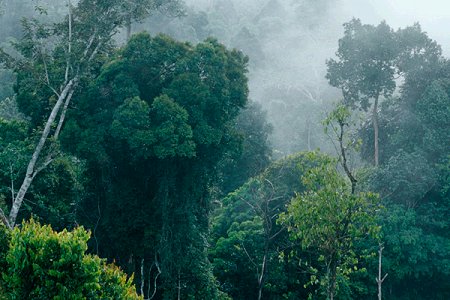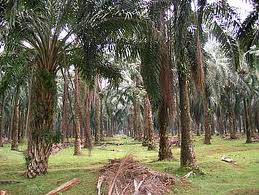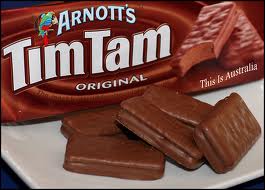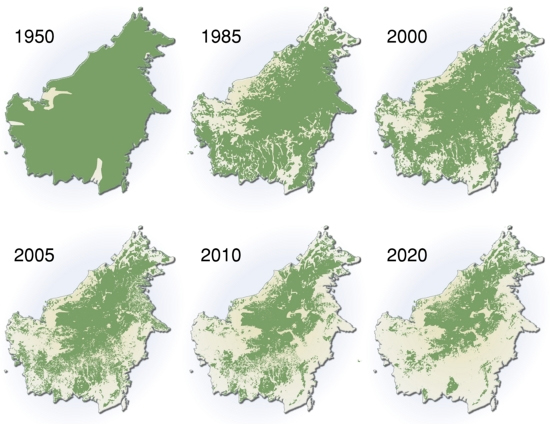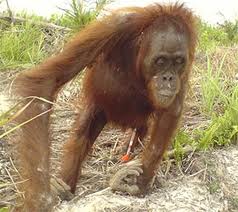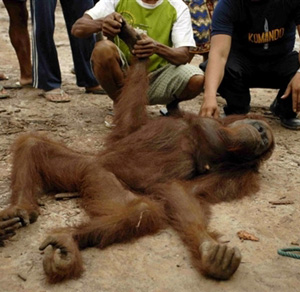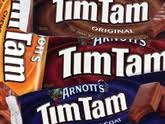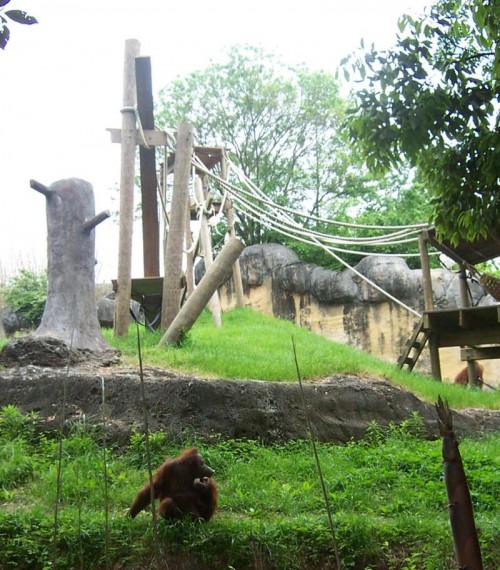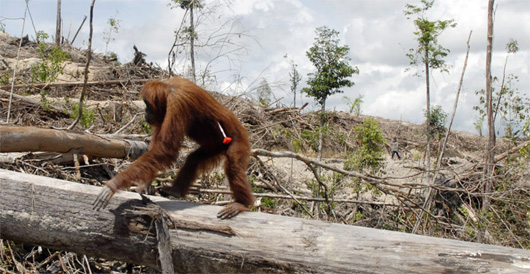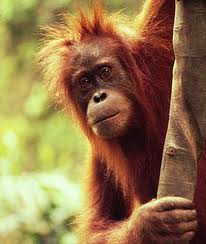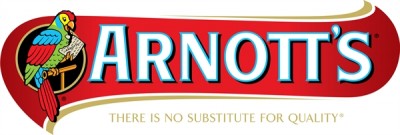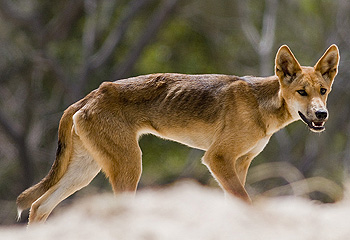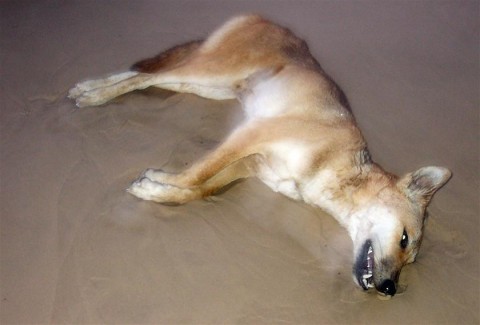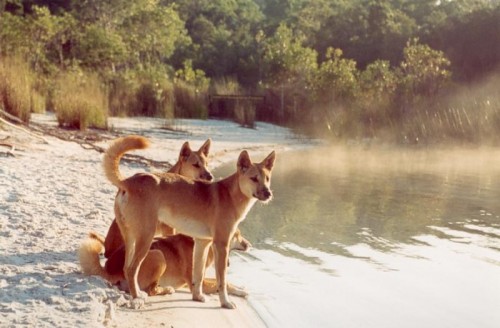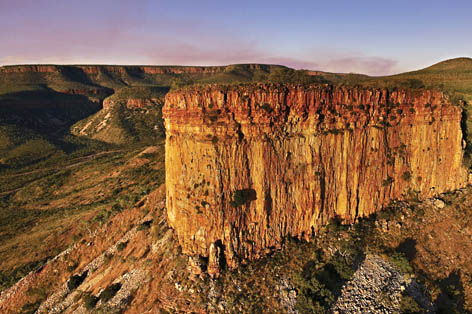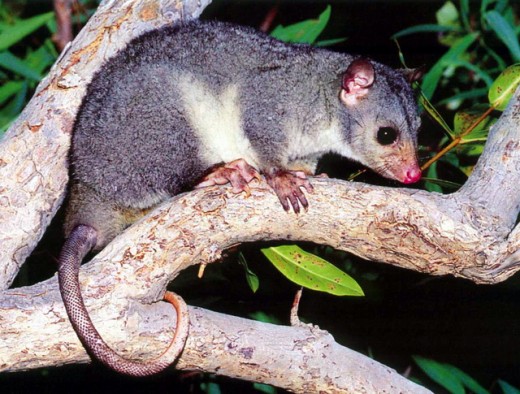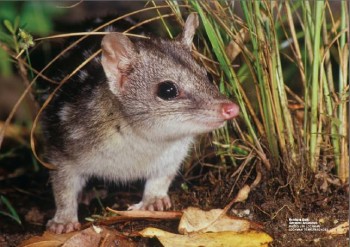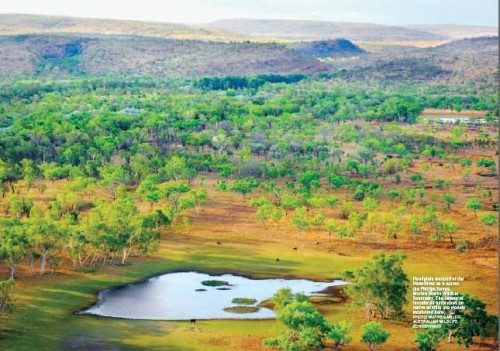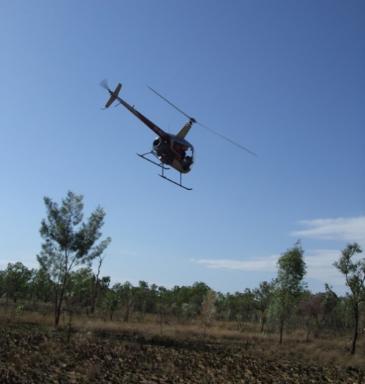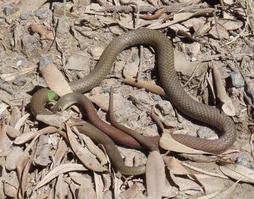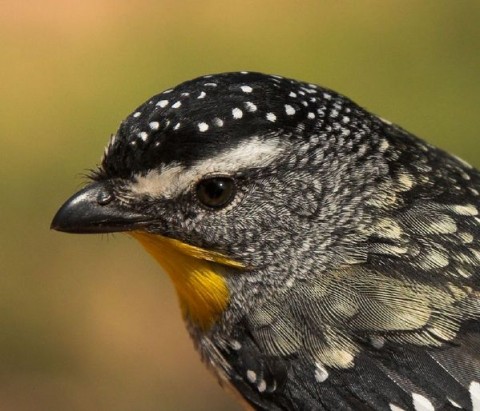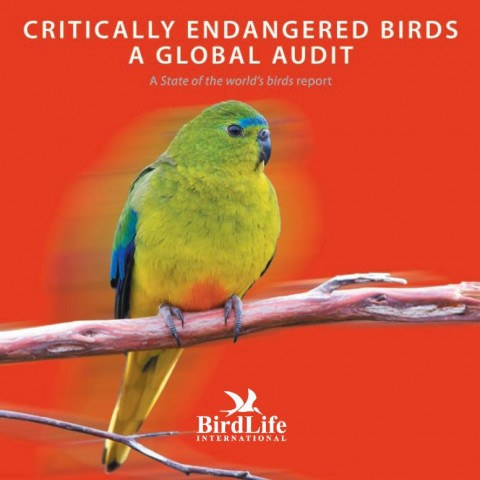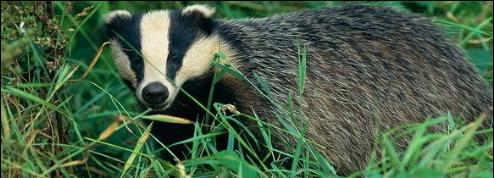 Native Badger (Meles meles)
Reilly and Gole Woods Nature Reserve
(Northern Ireland Environment Agency)
Native Badger (Meles meles)
Reilly and Gole Woods Nature Reserve
(Northern Ireland Environment Agency)
.
…Native badgers are under threat across the United Kingdom from misguided State-sanctioned poaching.
.
“People come–they stay for a while, they flourish, they build–and they go.
It is their way.
But we remain.
There were badgers here, I’ve been told, long before that same city ever came to be.
And now there are badgers here again.
We are an enduring lot, and we may move out for a time, but we wait, and are patient, and back we come.
And so it will ever be.“
.
~ Kenneth Grahame, The Wind in the Willows, Chapter 4.
.
.
The Badger – a native to Britain
.
Most people in Britain only know of badgers as road kill mess from their cars and trucks as they drive fast along country roads. Most people in Britain live in the warmth, convenience and security of an urban environment closely in their urban social groups.
Badgers live closely in their own social groups in the warmth, convenience and security of their underground ‘setts‘. Badgers live a whole world away from people, or would if they could – they have become nocturnal in places with high human populations. Over the centuries, as human numbers have exploded across Britain, people have spread further and further taking over and destroying wildlife native habitats, including the world of the native badger.
Few people in Britain will know much about the badger and its ecology, save of course wildlife ecologists, zoologists and the growing number of dedicated ‘badger watchers‘.
Badgers remain one the largest wild animals left across the British Isles. They are beautiful animals. They are native and deserve human respect.
.
.
Says wildlife photographer from Lancashire, (Michael S):
“As a wildlife photographer, I’m lucky enough to spend a good portion of my time observing the wildlife of this country. Nothing – and I mean NOTHING – is as magical to me as the moment, after much silent waiting around in cold, damp woodland, that the first badger tentatively emerges from its sett, shortly followed by the rest of the family (presumably once the “all clear” has been given). I’ve often been so transfixed just watching them interact and play that I forget to take photos.”
[Source: BBC website, http://www.bbc.co.uk/news/magazine-11380921 [Viewed 20110318]
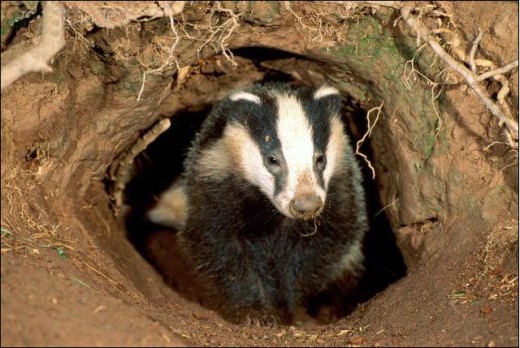
.
.
‘The European Badger (Meles meles) belongs to the family of mammals known as Mustelidae (possessing musk glands), otherwise known as the weasel family and includes the otter, stoat, polecat, ferret and pine marten. The badger is indigenous to most of Europe including the British Isles, with the largest abundance found within southern England.
‘The name ‘badger‘ is believed to come from the French word ‘becheur‘, meaning digger. Across Britain, badgers occupy a large range of habitat types and they are often found in what’s left of Britain’s native woods and copses, as well as in scrubs, hedgerows, quarries, moorlands, open fields and even in housing estates as the developers encroach on pastoral areas. They are however more abundant in areas where a mosaic of features are present such as deciduous woodland, pasture and arable habitat types. Remember that the badgers and their native habitat existed before the property developers.
Badgers live in setts, a network of underground tunnels, which they dig using their strong claws. Badger density increases with hilliness and a survey undertaken by the Mammal Society has found that 92% of setts in Britain were dug into slopes. Badgers prefer slopes for a variety of reasons. Firstly slopes help the excavation of soil, which can spill down the slope as it is dug. Sloping land is also well drained and more likely to be warm and dry. In colder climates badgers can easily dig to a depth with is frost proof.
As social group has about five badgers in winter and is typically headed by a dominant male and female. Male badgers patrol their territory boundary during the early spring breeding season (February – March) and mark the borders of the territory with dung. If a stray boar (head male) from another colony is encountered the ensuing fight can be particularly fierce.
Although badgers are members of the order carnivore, they are in fact foraging ominvores, meaning they eat a wide range of plants and animals. This has aided their adaptability, as humans have destroyed the natural landscape. Badgers have a varied diet depending on what food available and on the time of year. A badger’s diet mainly consists of earthworms and a large boar can eat as many as 200 earthworms in a single night. Their diet is supplemented with insects, birds, small mamals, fruits and berries, cereals , reptiles and amphibians.
[Source: The Badger Trust, November 2008]
.
.
Badger – a history of human persecution
.
Badgers have an excellent sense of smell and can find human scent particularly disturbing. Badgers have an elusive nature, inculated from centuries of human persecution.
In England prior to the 19th Century, the badger is believed to have had a wide distribution, but heavy persecution in the 19th Century caused numbers to drop dramatically and by the end of the 19th Century badgers were considered rare. Badgers were largely poisoned, trapped and shot by game keepers and farmers who mistakenly saw the badger as a threat to livestock. Between 1960 and 1972 numabers also were in decline due to increased road construction and vehicle numbers as well as trains causing escallating roadkill of badgers aand other wildlife. In addition, badger persecution has extended to gassing of badger setts, shooting and increased overuse by farmers of pesticides causing badgers to be poisoned and causing reduction in fertility rates.
The passing of the Badger Act 1973 (and amendments in 1981, 1991, and 1992) has helped badger number to recover and today across Britain there are an estimated population of 300,000.
.
Badger Baiting
.
‘Badgers were also cruelly persecuted through the 18th Century by the wicked blood practice of ‘badger baiting‘ . Badger baiting was outlawed in the United Kingdom as early as 1835, with the introduction of the Cruelty to Animals Act and the Protection of Animals Act 1911. Badger Baiting was made illegal in 1835 and is currently an offence under the but it has never died out. Sadly, it is the badger’s tenacity, its apparent ability to absorb almost any punishment and still go on fighting, which has made it a target for people who get their kicks from inflicting cruelty upon animals, even today.
Every year, hundreds of badgers meet a horrific death in the name of ‘sport’ in the UK at the hands of terriermen. Many of those who have been caught digging into badger setts have used the excuse that they were after foxes – and many have escaped prosecution by so doing. More than 10,000 are caught, tortured and killed in the UK each year by huntsmen with terriers – with almost a third of these illegal acts being carried out in Wales. Alarmingly, this figure is rising constantly. Terry Spamer, a former RSPCA inspector, believes that there are around 2,000 people involved in badger baiting currently. However, only around three people are caught and convicted of badger baiting each year, while the majority carry on breaking the law.
Small terriers, such as Lakelands, Patterdales, sometimes Jack Russells or a cross-breed are sent down into a badger sett to locate a badger and hold it at bay. The men then dig their way down to their quarry and drag the badger out of the sett. Many diggers attach a radio transmitter to the dog’s collar before sending it below ground then all they have to do is use a radio receiver/locater to determine the exact location of the dog.
There are essentially two types of badger baiters. The first who do it just for the pleasure of killing the badger on the spot and no money is involved. If it’s lucky the badger will be shot but usually the men will set their snarling terriers on the badger and watch it suffer a long and agonising death stabbing it with shovels for good measure. At times, the dogs and the badgers may die when the sett collapses and suffocates them.
The second type of badger baiting involves gambling where large sums of money can change hands. The badger is dug out of the sett in the manner described above and then it is put in a bag and taken away to be baited later on. The badger is taken somewhere quiet for example a barn, shed or cellar and placed into a makeshift arena, a ring or pit, from which it cannot escape. Dogs are then set upon it. Even if the badger is lucky enough to get the better of one dog, the owner may hit or otherwise injure the badger in order to ‘protect his pet’. Ultimately, no matter how well it tries to defend itself, the badger’s fate is sealed. The badger, through injury and exhaustion, will not be able fight any longer. Its back legs are held by a chain to prevent escape. The animals multilated head, minus nose and lower jaw, finished up mounted on a plaque. The baiters will then kill the badger usually by clubbing or shooting it. Gambling is always involved and a winning dog’s value will rise – along with the price of its puppies. An anonymous letter received by Badger Watch & Rescue Dyfed states that badgers are being caught and sold for about £500 for baiting.
 Badger Baiting, London, circa 1824
[Source: Henry Thomas Alken, this image is free in the public domain due to its age,
Wikipedia, ^http://en.wikipedia.org/wiki/File:Badger-baiting3.jpg]
Badger Baiting, London, circa 1824
[Source: Henry Thomas Alken, this image is free in the public domain due to its age,
Wikipedia, ^http://en.wikipedia.org/wiki/File:Badger-baiting3.jpg]
.
Badgers are shy and peaceful animals and not normally aggressive, but will defend themselves if cornered or provoked. A badger has great strength and a blow from one of its vicious claws can do serious harm. Many dogs seriously injured during badger digging and baiting go untreated as their owners are more concerned vets will become suspicious of the owner’s illegal activity.’
(Read More)
.
Badger Hunting
.
‘People kill more badgers than predators and natural causes. In most of the countries where badgers live, they are hunted in great numbers for several reasons. Several thousands of badgers are targeted for their fur, meat or just a cruel ‘sport’. In some countries like Germany, USA and Canada, the hair of badgers are used in shaving and painting brushes. In Britain, Badgers are legislatively protected. However, killing badgers in Britain rather continues secretly.
Badgers are hunted in several ways. Through illegal and cruel methods, people dig out badgers from their setts. In several cases, badgers are also snared, shot or poisoned to death. Very often, badgers also accidentally get trapped in snares set up to catch foxes. Quite a many times, the snares are left unchecked for hours or days and the badgers caught up in them are left to their cruel fate of suffering a long agonizing period of capture, starvation, and dehydration, eventually facing a horrible death.

Urban sprawl and intensive agriculture are two main threats to the life and population of badgers. Badgers are creatures of rather a set habitual pattern and are not good in adapting to any change. Under disturbances from people or developments, badgers are forced to quit their habitat and move on or just die out in a helpless state. Quite unknown to people, badgers can also come to the gardens, cultivations and parks of the suburban area in search of food.
Badger hunting in the name of fun or sport or under the belief that they damage livestock has seriously devastated the badger population in some areas like South Yorkshire. In certain regions like Essex, agricultural intensification has resulted in the decline of badger population.
Some people use modern technology to hunt badgers. Night vision equipments enable the poachers to trace the poor animals in the dark, at the same time evading from the eyes of gamekeepers and police personnel. The other technology used in hunting is lighting. In this method, the criminals carry a high-intensity searchlight and locate the animals. Once the animals are disoriented at the sight of bright light, they either shoot the animals or capture them using hunting dogs.
There are also cases of poisoning the badgers, both accidentally and purposefully. Quite often when the poison is meant for killing other wilder life and pests, many poor badgers become unfortunate victims and die. Badger hunting is a serious offense. Unintentional killings of badgers can invite heavy fines and warnings, while intentional killings can lead to jail sentences.’
[Source:
http://www.savethebadgers.co.uk/badger-hunting.shtml]
.
.
Badgers and British Law
.
Why are badgers protected?
.
Badgers and their setts are legally protected from intentional cruelty, such as badger-baiting, and from the results of lawful human activities, such as building developments. The legislation, mainly the Protection of Badgers Act 1992 (the 1992 Act), has provided a useful tool in deterring the abuse of badgers and in prosecuting those who continue to break the law.
.
However, it is a sad fact that many thousands of badgers are still killed illegally each year, and the incidents appear to be increasing. Also, due to the nature of the crimes, there are relatively few successful prosecutions.
These notes are intended to provide some background to the law relating to badgers. However, the issue is complex and more detailed information can be obtained by contacting Badger Trust
.
Threats to badgers
.
Badgers in the UK are threatened by both legal and illegal activities.
Legal activities, subject to compliance with conditions in the 1992 Act, include:
.
- Road and housing development;
- Forestry and agricultural operations; and
- Badger culling by the Department of Environment Food and Rural Affairs and the Welsh Assembly Government in relation to bovine TB in cattle;
.
Illegal threats to badgers include:
- Badger-digging and baiting
- Snaring
- Poisoning (including the misuse of pesticides)
- Lamping, and
- Sett interference
.
.Relevant legislation
.
The main legislation protecting badgers in England and Wales is the Protection of Badgers Act 1992 (the 1992 Act). Under the 1992 Act it is an offence to:
- wilfully kill, injure, take or attempt to kill, injure or take a badger;
- possess a dead badger or any part of a badger;
- cruelly ill-treat a badger;
- use badger tongs in the course of killing, taking or attempting to kill a badger;
- dig for a badger;
- sell or offer for sale or control any live badger;
- mark, tag or ring a badger; and
- interfere with a badger sett by:
- damaging a sett or any part thereof;
- destroying a sett;
- obstructing access to a sett;
- causing a dog to enter a sett; and
- disturbing a badger while occupying a sett.
.
The 1992 Act defines a badger sett as: “any structure or place which displays signs indicating current use by a badger”
.
.
DEFRA’s position on Bovine TB and British cattle as at 6 April 2011
.
[NOTE: This data has been extracted, rather than referenced as a link, due to the changeable habit of DEFRA changing its website. If DEFRA wishes to retain public access to its referenced documents, then members of the public ought to be able to access these freely from DEFRA’s website ].
DEFRA’s website (as at 6 April 2011): http://www.defra.gov.uk/food-farm/animals/diseases/tb/
.
‘Bovine tuberculosis (bTB) is an infectious disease of cattle. It is caused by the bacterium Mycobacterium bovis (M. bovis), which can also infect and cause TB in badgers, deer, goats, pigs, camelids (llamas and alpacas), dogs and cats, as well as many other mammals.
Bovine TB is a zoonotic disease, which means it can be transmitted from affected animals to people, causing a condition very similar to human TB. However, the risk of people contracting TB from cattle in Great Britain is currently considered very low.
This page aims to provide a comprehensive introduction to our work to tackle the disease.’ ~ DEFRA.
Latest news
- 31 March 2011 – Cattle testing positive for TB to be DNA tagged
- 28 March 2011: Bovine TB surveillance reports for Great Britain compiled by the Veterinary Laboratories Agency (VLA)
- 18 March 2011: Provisional TB statistics for Great Britain are now available for December 2010
- 28 February 2011: Bovine disease compensation payable during March 2011
- 31 December 2010: Statistics for TB in non-bovine species are now available
- 11 November 2010 – Defra launches new support service for TB affected farmers
- 8 November 2010 – the following material has been made public:
* Safety and efficacy data from the studies used to license the injectable badger vaccine, BadgerBCG
* Computer modelling comparing badger control strategies for reducing bovine TB in cattle in England.
To view this material, and supporting information, please see the Research section of this page
15 September 2010 – the following material has been published:
- Government’s approach to tackling bovine TB and consultation on a badger control policy (this consultation has now closed. We will be announcing a comprehensive and balanced TB Eradication Programme for England as soon as possible)
- Changes to cattle testing policies
- Review of the pre-movement testing policy in England and Wales – April 2006-March 2009
- Bovine TB and the use of PCR: Summary of 12 July meeting chaired by Defra’s Chief Scientific Advisor
.
Key facts and figures
- Bovine TB is a largely regional problem, concentrated in the West Midlands and South West of England.
- 91.9% of cattle herds in England were officially bTB-free on 31 December 2010.
- 24,899 cattle were slaughtered for bTB control in England in 2010 (compared with 25,557 in 2009).
- Government spend on bovine TB in 2009/10 was about £63 million in England.
- Monthly statistics are published
.
What is the case for government action?
Alongside maintaining vigilance over risks to public health, the main rationale for government intervention is to mitigate the economic impact of the disease on the farming industry and to meet EU legal requirements.
The original reason for government’s involvement in tackling the disease was to protect public health. Pasteurisation of cows’ milk, together with a comprehensive cattle testing/slaughter programme, and inspection of cattle carcases at slaughterhouses, have significantly reduced (to a very low level) the risks to human health.
Bovine TB is having a serious impact on many farm businesses and families, especially in the West and South West of England. Thousands of cattle are slaughtered each year at huge financial and emotional cost to farmers. The area of England affected by bovine TB has grown from isolated pockets in the late 1980s to cover large areas of the West and South West of England. The costs to the taxpayer are rising year by year and there is a strong case for early effective action to turn this around.
No single measure will be enough to tackle the disease on its own. We need to use every tool in the toolbox. There is a significant reservoir of infection in badgers and evidence suggests, without addressing the problem in the badger population, it will not be possible to eradicate bTB in cattle. Cattle measures will remain the foundation of our bTB eradication programme but we also need to deal with the disease in badgers. The farming industry, the veterinary profession and government need to work in partnership if we are to eradicate the disease.
Current situation and background
There has been a long-term (over 25 years) increasing trend in bTB incidence in cattle, driven by both cattle-to-cattle and badger-to-cattle transmission.
A wide range of measures is in place to tackle, and reduce further spread, of the disease, including:
- Regular cattle herd surveillance testing
- Slaughter of test positive ‘reactor’ cattle
- Herd movement restrictions on bTB breakdown herds
- Zero tolerance of overdue herd tests
- Use of additional, more sensitive diagnostic tests
- Pre-movement testing (paid for by farmers) of cattle from high risk herds
- Farmer advice, including husbandry guidance
.
Badgers and bovine TB
The Coalition has committed, as part of a package of measures, to developing affordable options for a carefully-managed and science-led policy of badger control in areas with high and persistent levels of bovine TB.
Defra has been looking at all the key relevant evidence, including published scientific evidence from the Randomised Badger Culling Trial (RBCT) and subsequent post-trial analyses, to draw up proposals, which have been published for public consultation.
The government’s proposal is to issue licences to farmers/landowners who wish to cull and/or vaccinate badgers at their own expense. These licences would be subject to strict licence criteria to ensure badger control is done effectively, humanely and with high regard for animal welfare.
We welcome your comments and responses to the consultation (our website also contains details of how to submit your response):
* Consultation documents
As part of Defra’s commitment to tackling the issue of bovine TB, government has invested in a significant research programme looking into the development of vaccines for both cattle and badgers.
* More information on vaccination
A Badger Vaccine Deployment Project (BVDP) is being funded by Defra to assess and maximise the viability of using injectable badger vaccine and to help us move towards the long-term goal of an oral badger vaccine. Badgers on up to 100km2 of land in Gloucestershire are being trapped and vaccinated over 5 years using the injectable badger vaccine licenced in March 2010. The deployment project aims to build confidence in the principle and practicalities of vaccination.
.
Testing for bTB
The primary screening test for bTB in cattle in Great Britain is the Single Intradermal Comparative Cervical Tuberculin (SICCT) test, commonly known as the tuberculin “skin test”.
This is used throughout the world to screen cattle, other animals, and in a modified version, people for bTB. It is the internationally accepted standard for detection of infection with M. bovis. All cattle herds are subject to regular ‘routine’ testing, the frequency of which is based on the local disease incidence e.g. herds in high bTB risk areas are tested annually.
The more sensitive gamma interferon blood test (g-IFN test) is used in addition to the SICCT test in prescribed circumstances. In addition, Pre-Movement testing is a statutory requirement: cattle 42 days old and over moving from a 1 or 2 yearly tested herd must have tested negative to a bTB test within 60 days prior to movement.
.
Cattle Compensation
Government compensation is paid to owners of cattle compulsorily slaughtered for bTB control purposes. Since February 2006 compensation in England has been determined primarily using table values, which reflect the average sales price of bovine animals in 47 different categories. The categories are based on the animal’s age, gender, type (dairy or beef) and status (pedigree or non-pedigree).
* Cattle compensation table values
.
Other farmed/domesticated species
In England, bTB is rarely self-sustaining in most species other than cattle and badgers. Nevertheless, DEFRA has controls in place to deal with suspected or confirmed cases in other species.
TB in wild and captive deer is a notifiable disease under the Tuberculosis (Deer) Order 1989 and suspicion of disease should be reported to Animal Health (AH). Following investigation, movement restrictions can be imposed on farmed animals. Defra is currently reviewing the controls for non-bovine species, in particular South American Camelids (llamas and alpacas), goats and deer.
Bovine TB occasionally affects cats and dogs and owners should seek advice from their vet. More about TB in other species.
.
Research
A significant amount (over £8.7 million in 2009/2010) is spent on a wide-ranging bovine TB research programme with a portfolio comprising projects looking at vaccine development; licensing studies; new diagnostic tests and disease epidemiology to support vaccine use.
Vaccination of either cattle or wildlife is considered a potential long-term policy option for reducing the risk of bTB in Great Britain. As such, a substantial part of the Defra research programme focuses on this.
The injectable badger vaccine, BadgerBCG, was granted a Marketing Authorisation by the Veterinary Medicines Directorate in March 2010 to be used for the active immunisation of badgers to reduce lesions of tuberculosis caused by Mycobacterium bovis. The safety and efficacy data required for licensing the vaccine were generated from the following studies:
- SE3216 Development and testing of vaccines against badger tuberculosis (Project report to Defra on GLP captive badger safety study)
- An investigation into the safety of BCG vaccine in badgers (Good Laboratory Practice (GLP) captive badger study) (PDF 393 KB)
- Vaccine Efficacy Study with Bacille of Calmette and Guérin (BCG) Vaccine Administered Parenterally to Badgers (PDF 1.22 MB) – Safety data (Captive badger studies)
- Vaccine Efficacy Studies with Bacille of Calmette and Guérin (BCG) Vaccine Administered Parenterally to Badgers (PDF 4.83 MB) – Efficacy data (Captive badger studies)
- CB0116 Research Project Final Report – Efficacy testing of BCG vaccine in badgers (Project report to Defra on captive badger studies) (PDF 505 KB)
- Field trial to assess the safety and efficacy of Bacille Calmette Guérin (BCG) vaccine administered parenterally to badgers (Good Clinical Practice (veterinary) study on wild badgers) (PDF 630 KB), plus additional supporting data in Appendices (PDF 1.89 MB)
The laboratory studies with captive badgers demonstrated that vaccination of badgers by injection with BCG significantly reduces the progression, severity and excretion of Mycobacterium bovis infection. A key finding of the field study, conducted over four years in a naturally infected population of over 800 wild badgers in Gloucestershire, was that vaccination resulted in a four-fold (74%) reduction in the proportion of wild badgers testing positive to the antibody blood test for TB in badgers. The blood test is not an absolute indicator of protection from disease so the field results cannot tell us the degree of vaccine efficacy. While the findings indicate a clear effect of vaccination on badger disease, data from the laboratory and field studies do not lend themselves to giving a definitive figure for BadgerBCG vaccine efficacy.
A scientific paper summarising the results of the injectable BCG badger vaccine research has been published in the scientific journal Proceedings of the Royal Society B.
Computer modelling (PDF 478 KB) by the Food and Environment Research Agency (Fera), completed since the publication of the consultation document, examined the strategies contained in the consultation proposals. These were using badger culling combined with vaccination (i.e. ring-vaccination around an area of culling) and comparing these to culling-only, vaccination-only and do-nothing strategies. The Fera modelling assumed a vaccine efficacy of 70%.
.
The results of the modelling were that:
a) A combined strategy of vaccination in a ring around a culling area was more successful than the cull-only strategy, which in turn was more successful than the vaccination-only strategy, both in reducing the number of TB infected badgers and cattle herd breakdowns. Ring vaccination partly mitigated the detrimental effects of culling. However, the combined strategy requires about twice as much effort than either single approach done in isolation.
b) Culling of badgers should continue for at least four years to realise a clear benefit. However, low rates of land access for culling, or low culling efficiency, or the early cessation of a culling strategy was likely to lead to an overall increase in cattle herd breakdowns (whilst this is not the case for vaccination).
An injectable badger vaccine was authorised for use in March 2010. Work to develop useable cattle and oral badger vaccines is ongoing. Cattle vaccines are currently prohibited under EU legislation as they are based on BCG, which interferes with the statutory primary diagnostic test, the tuberculin skin test. Vaccinated cattle would therefore react as if infected and herds could not be declared Officially TB Free (OTF).
We are therefore developing a diagnostic test to differentiate between Infected and Vaccinated Animals (a so-called ‘DIVA test’). Changes will be required to EU legislation to allow this test to be used in place of or alongside the tuberculin skin test to confer OTF status.
.
Further details of Defra’s TB research projects:
- Current research projects (PDF 210 KB)
- Completed research projects
The Bovine TB Eradication Group for England (TBEG)
TBEG was established in 2008 to make recommendations to the Secretary of State on bovine TB and its eradication. The membership of the group includes representatives from the farming industry, the veterinary profession, Defra and Animal Health.
* More information about the Group
* Highlights of the thirty-first meeting on 15 December 2010
.
Advice and support for farmers
The provision of better support for bTB-affected farm businesses has been identified as a priority by TBEG. In October 2009 TBEG recommended a number of new measures aimed at helping owners of bTB restricted herds to maintain their businesses and avoid some of the practical problems created by movement controls.
Farmers wishing to find out more about bTB should contact their local AH office and/or refer to any of the TB In Your Herd publications.
For bTB affected cattle farmers we are also developing a package of government-funded advice (based on the latest scientific evidence) covering veterinary; biosecurity; and business issues. Farmers can now access free business support, through the Farm Crisis Network (FCN). FCN agents will provide practical support, sign-post businesses to sources of other more specialist advice, and for those in greatest financial need a dedicated FCN Business Support Group will advise farmers on their options.
Working in partnership, Defra, NFU, Animal Health and Fera have developed TB biosecurity training events for farmers which will be rolled out, across England, later this year.
We are also working with the profession to deliver enhanced private veterinary support. A pilot scheme has been launched in the South West where farmers under TB restrictions for 12 months or more, as well as those experiencing their first breakdown, will qualify for a visit from private vets trained in all aspects of TB: the vets will provide tailored advice to help farmers understand how TB spreads and what can de done on their farm to reduce risks. Joint TB meetings for private vets and their farming clients are also being trialed with two events held in the Midlands so far.
.
Support provided under the advice scheme complies with EU state Aid rules.
* England support/advice scheme for TB affected farmers (PDF 125 KB)
Defra has worked with NFU and Animal Health to develop a series of ‘quick guides’ for farmers affected by TB, sign-posting them to a range of additional support and providing contacts for further TB advice. These form part of the ‘TB In Your Herd publications’
.
Relevant legislation and regulations
* EU Directive 64/432/EEC (consolidated version) (PDF 600 KB)
* The Tuberculosis (England) Order 2007 SI No 740
* The Cattle Compensation (England) Order 2006 SI No 168
.
Key publications and documents
- Government strategic framework
- Krebs report: Executive summary Government’s response
- TB Eradication plan 2010 (PDF 8 MB)
- Independent Scientific Group final report (PDF 2.5 MB) on the Randomised Badger Culling Trial
- TB Eradication Group progress report (PDF 800 KB)
- TB guidance published by Animal Health
.
.
Slaughter risk to badgers in Wales [2010-2011]
.
“On 13th January 2010, the Welsh Assembly Government announced that they had given the final go-ahead for a “cull” of Badgers – we use the word “cull” here, but we feel murder, kill, or slaughter would be more accurate words to describe their plans. The Badger Trusthas mounted a legal challenge to this outrageous decision, but despite opposition from some Welsh Assembly Members, who wanted to at least respect the judicial process and halt preparations until the latest challenge is resolved, the Rural Affairs Minister, Elin Jones decided that the slaughter of badgers in Wales will go ahead, regardlessIt seems there is no doubt, Eldin Jones and those in the Welsh Assembly Government who support this action are determined, bullish even, to carry out the slaughter of badgers in Wales.Why? Well, you may rightly ask. Would it possibly be because a number of Welsh AM’s live in rural constituencies and want to appease the powerful farming lobby – a life of a badger, for a vote, perhaps!?Or, could it be that the WAG are anxious to “flex their muscles”; to “show the world” that they can do what theywant; to grab attention and put themselves in the media spotlight by making a massively controversial decision like this?Of course the Welsh Assembly Governments appear to have chosen to ignore a huge amount of scientific opinion and study which shows that such action is not only unjust, as badgers are not the main problem in relation to bovine TB, such a policy would also be incredibly expensive, extremely cruel, and would not work!Rather bizzarely, they have seemingly also chosen to ignore the results the Westminster Governments own research into this matter who concluded that a cull of badgers was not the best way to deal with bovine TB. As a result of their research, the Westminster government have advocated a programme of the vaccination of badgers and the enforcement of stricter controls of cattle as the best methods to deal with the problem.
News of the Welsh Assembly Government’s decision has shocked the world, and reaction from leading animal welfare and wildlife organisations has been swift.
The RSPCA has condemned the Welsh proposals saying that: “a badger cull could cause enormous suffering and actually increase the spread of disease.”
[Source: ^http://www.savethebadger.com/]
.
.
‘Badger Culling in the Intensive Action Area ‘
.
On 9 March Elin Jones, the Minister for Rural Affairs, laid the Badger (Control Area) (Wales) Order 2011.
‘This Order allows for a Government managed cull of badgers, alongside stricter cattle measures, in the Intensive Action Area in west Wales as part of the Welsh Assembly Government’s TB Eradication Programme.
If eradication of bovine TB is to be achieved in areas where the disease is endemic, and where the majority of cattle are slaughtered in Wales, need to be addressed. Stringent cattle controls alone will not achieve eradication and need to be implemented with effective badger intervention to deal with that source of infection.
The evidence presented to the Minister to help her make this decision is available here. This included a report on the responses to the Consultation on Badger Control in the Intensive Action Area (IAA) and the scientific evidence that is available on the options considered.’
[Source: Welsh Assembly Government, http://cymru.gov.uk/topics/environmentcountryside/ahw/disease/bovinetuberculosis/intensiveactionpilotarea/badgercullingiaa/?lang=en (viewed 20110411).]
.
.

.
“The evidence is that a badger cull on a scale or level of efficiency that seems feasible will not solve cattle farmers’ problem – that problem is truly serious. Understandably, the feeling is that something must be done, but the evidence is that it should not be a badger cull.”
– Sir David Attenborough.
.
“It is shameful that the Welsh Assembly Government proposes the protracted slaughter of thousands of badgers apparently with no clear idea of what benefits, if any, could be expected. Even the latest apology has no foundation in science. The broad policy proposals have been missold to the public and, crucially, to farmers. The subject, and the badgers, deserve careful science, not the politics of blunderbuss.”
– David Williams (January 2010), The Badget Trust
.
.
‘Wales to press ahead with badger cull’
[9th March 2011, The Guardian]
‘Welsh rural affairs minister Elin Jones gives go ahead to much-delayed move intended to control bovine tuberculosis
A badger cull in Wales to curb tuberculosis in cattle could finally be launched, just weeks after the Welsh assembly government said the necessary powers would come into force from 31 March.
The controversial cull was delayed last year after wildlife campaigners won a legal battle over previous plans, but rural affairs minister Elin Jones has always intended to press ahead – mainly in north Pembrokeshire – despite recognising what she called the “genuine concern” of opponents.
About 1,400 of the estimated 35,000 badgers in Wales are likely to be trapped and shot by contractors, the government has said previously, while insisting population levels would recover. TB-infected badgers are seen as prime conduits for TB in cattle, prompting Queen guitarist Brian May to attack “an apparently insatiable lust to take revenge” on the animals.
Separately, ministers in England are gearing up to licence farmers to kill badgers in specified areas, including the south-west, where many dairy farms have been hit by bovine TB, but there have been delays in announcing finalised plans..
The Department for Environment, Food and Rural Affairs said: “Bovine TB is a devastating disease and tackling it is complex, so … we need to make sure we get it right. We will be announcing a comprehensive and balanced TB eradication programme for England as soon as possible.”
Expressing “extreme disappointment” at the Welsh decision, the RSPCA said the cull could lead to the “virtual elimination of badgers” from an area of nearly 300 square kilometres. “We believe that this is a dead end policy in every respect,” said Colin Booty, one of its wildlife scientists. “Not only will it result in the death of at least 70% of badgers from the cull area, but it will not resolve the problem in other areas of Wales.”
The Badger Trust, which successfully challenged the original plans, also criticised what it called the Welsh government’s “misconceived and counterproductive proposals … despite significant reductions in bovine tuberculosis over the past two years.” It would study the evidence presented to Jones and “will seek legal advice in relation to the latest decision, which may also be subject to a challenge in the Welsh assembly”.’
[Source: ‘Wales to press ahead with badger cull‘, by James Meikle, The Guardian newspaper (UK) 20110309, , http://www.guardian.co.uk/environment/2011/mar/09/wales-press-ahead-badger-cull-tuberculosis)
.
.
Slaughter risk to badgers across England [2011]
.
‘Badger cull decision faces delay’
[BBC News, 18th February 2011, by Richard Black,Environment Correspondent]
The UK government’s decision on whether to allow badger culling to curb cattle TB in England is to be delayed. The Department for Environment, Food and Rural Affairs (DEFRA) had planned to announce its completed policy around the end of this month.But BBC News understands it could come as late as May – raising doubts over whether a cull could begin this year.
One source said DEFRA did not want to “mess up” again after abandoning its plans to sell some public forests. Defra came under heavy fire over the plans for England and announced on Thursday that it was scrapping them.
The latest government figures suggest that numbers of cows infected with tuberculosis are falling in England and Wales, which campaigners say makes the case for culling more difficult.
Agriculture Minister James Paice told the National Farmers’ Union (NFU) conference this week that there would be a delay. Sources suggest a number of factors make an announcement before May unlikely.
There are practical issues to be sorted out over how farmers would be licensed to conduct the cull – details that may be crucial to the chances of culling reducing bovine TB, and to the government’s chances of surviving any legal challenge to its plans.
But one source close to the issue said the department’s experience with its plans for the forests were also behind the delay.
“They’ve messed up on forests – they don’t want another one,” the source said.
On Thursday, Environment Secretary Caroline Spelman was forced to apologise to MPs over plans to transfer 258,000 hectares of state-owned woodland in England into private management, acknowledging the government had “got this one wrong”. What’s happened does demonstrate that the disease can be controlled without the necessity of killing wildlife” – Jack Reedy, Badger Trust.
The government launched a consultation on bovine TB management in September, Mr Paice telling reporters: “Bovine TB is having a devastating effect on many farm businesses and families… we can’t go on like this.”
Before and after the election, he assured farmers that his government would introduce badger culling.
The NFU is keen to see it begin. But Kevin Pearce, the union’s director of regions, told BBC News it was important that the government took time to get the details right.
“Clearly we want a decision as soon as possible, but this has to be done properly,”
“Defra has to consider all of the responses and all of the facts before making any announcement in response to its consultation.”
Badger cubs playing A “closed season” for shooting would aim to protect badger cubs
The government’s interpretation of the scientific background is that to be effective, culling would have to be done over large areas with as many landowners as possible taking part in a co-ordinated way, and must sustained regularly for five years.
Critics suggest this will not be possible, and that some farmers are likely to drop out if they find they are spending money to hire marksmen without seeing a benefit. The science suggests that fragmenting the cull in this way would lead to a rise in TB incidence, as badgers scatter from their habitual runs and infect new herds.
The NFU wants groups of landowners to form into collective legal entities and apply for collective licences. This idea is under discussion, as is what measures the government could use to force farmers to finish the job if they tried to withdraw.
A further issue that Defra wants resolved is security, with the NFU’s submission to the consultation acknowledging: “There is concern within the industry that by participating in a cull, farmers and landowners will be targeted by activists wishing to disrupt a cull by damaging property and/or by harassment of farming families”.
Delaying the announcement until May could put the chances of beginning to cull this year in jeopardy.
The NFU says it could be done. Cattle screening Opponents say more frequent testing of cattle and curbs on their movement are tackling the disease
But opponents such as the Badger Trust are likely to seek a judicial review, which could mean substantial delays. And if data continues to indicate a reduction in the numbers of cows contracting TB, that would boost the trust’s case that culling is not scientifically merited.
Provisional figures for the first 10 months of 2010 show that for the UK overall, a smaller number of cattle confirmed as TB carriers were slaughtered than during the same period a year earlier – 25,924 compared with 29,243.
England and Wales separately show a similar trend; and this follows a fall between 2008 and 2009.
“If culling had been introduced two years ago, everyone would now be leaping to the conclusion that the reduction was down to culling and saying ‘we told you so’,” said Badger Trust spokesman Jack Reedy.
“Plainly, what’s happened does demonstrate that the disease can be controlled without the necessity of killing wildlife.”
The English delay may also have implications for the Welsh Assembly Government, which – in a separate move under a different law – also wants to introduce culling this year.
[Source: BBC News,
http://www.bbc.co.uk/news/science-environment-12500468 [Viewed 20110411]
.
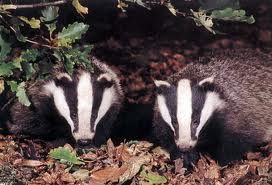
‘Sussex farmers in call for badger cull’
[BBC Sussex, 18th March 2011]
‘Sussex farmers have called for a badger cull after eight cases of bovine tuberculosis (TB) in cattle last year. Farmers want a badger cull to tackle bovine TB but wildlife
groups say it will not eradicate the disease. Sussex farmers have called for a badger cull after eight cases of bovine tuberculosis (TB) in cattle last year. The National Farmers Union (NFU) said each outbreak cost farmers thousands of pounds and the national herd was being “devastated”. Wildlife groups have objected to any badger cull and have argued the move will not affect levels of bovine TB.
Defra issued a statement which said an eradication programme would be announced as soon as possible.‘Reservoir of infection’The statement said: “Bovine TB is a devastating disease and tackling it is complex, so we need to make sure we get it right.”We will be announcing a comprehensive and balanced TB Eradication Programme for England as soon as possible.”
James Mulleneux, from the NFU, said: “Despite a huge amount of cattle controls in terms of testing and culling, we still have this reservoir of infection within badgers.”
He said the average cost to the individual farmer was £30,000 per confirmed outbreak, which was “huge” for any farming business.
He also said the disease cost the taxpayer £90m a year.
‘Larger herds’
He added: “It’s not just the financial cost, it’s actually the numbers of animals that are being taken out of the national herd.
“In 2008, we lost 40,000 head of cattle. In 2009-10, an average of 30,000. That’s not sustainable.”
But Colin Booty, a senior wildlife scientist from the RSPCA, said: “Defra’s own estimates suggest that even if culling could be undertaken according to a strict set of criteria, the best that one might achieve would be a 16% reduction in disease, not an eradication of the disease.”
And Jack Reedy, from the Badger Trust, said there were more cattle than badgers and cattle were being kept in closed conditions and larger herds, which was “a perfect prescription for passing round highly infectious diseases”.
He said: “In most of the past decade, there was a randomised badger culling trial that cost £50m.
“The main conclusion of that was that killing badgers could make no meaningful contribution and cattle measures were sufficient to do the job.”
[Source: http://www.save-me.org.uk/news/badger/article/sussex_farmers_in_call_for_badger_cull, [Viewed 20110411]
.
.
A badger ‘cull’ is an ignorant perversion.
It will only result in mass slaughter of native badgers.
It won’t control the spread of bovine tuberculosis throughout Britain’s cattle.
There are more effective smarter solutions.
If only the handful of backward badger biggots in DEFRA, the NFU and the WAG wised up.
.
.
.
Vaccinate the badgers!
.
According to an article of The Royal Society ‘Bacillus Calmette-Guérin vaccination reduces the severity and progression of tuberculosis in badgers’ published in September 2010, ..
‘the Control of bovine tuberculosis (TB) in cattle has proven particularly challenging where reservoirs of infection exist in wildlife populations.
In Britain and Ireland, control is hampered by a reservoir of infection in Eurasian badgers (Meles meles). Badger culling has positive and negative effects on bovine TB in cattle and is difficult, costly and controversial. Here we show that Bacillus Calmette-Guérin (BCG) vaccination of captive badgers reduced the progression, severity and excretion of Mycobacterium bovis infection after experimental challenge.
In a clinical field study, BCG vaccination of free-living badgers reduced the incidence of positive serological test results by 73.8 per cent. In common with other species, BCG did not appear to prevent infection of badgers subjected to experimental challenge, but did significantly reduce the overall disease burden. BCG vaccination of badgers could comprise an important component of a comprehensive programme of measures to control bovine TB in cattle.’
[Source: The Royal Society, http://rspb.royalsocietypublishing.org/content/early/2010/11/24/rspb.2010.1953, (viewed 20110411)]
.
.
Stop the dodgy farmers spreading TB!
.
Repeated reports continue to emerge of some unscrupulus cattle farmers hiding and spreading TB infected cattle. These criminals are the ones destroying Britain’s cattle industry and reputation, not the poor old badger. Read the following articles on the problem.
.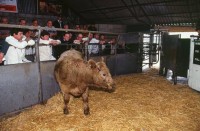
‘Farmers accused of cheating on TB slaughter rule by swapping cattle tags’
[by James Meikle, The Guardian, 31st March 2011]
‘Defra plans DNA tests for TB-positive cattle after farmers ‘disguised affected cows’ identity to avoid sending them to abattoir.
Tagged cows at a Leeds slaughterhouse. Some farmers have hidden the identity of TB-infected stock by switching ear tags, says Defra. Photograph: Christopher Thomond for the Guardian
Farmers in England face DNA checks on their cattle to prevent illegal swapping of their animals’ identities, an action the government says increases the risk of TB spreading to other herds and wildlife.
The environment department, DEFRA, said evidence was emerging that some cattle farmers in the south-west and Midlands could have been changing cattle ear tags to prevent TB-positive animals being sent to slaughter.
It is alleged that tag-switching has allowed farmers to send less productive cows to the abattoir in place of TB affected cattle.
A spokesman said three cases were already on their way to prosecution and investigations were continuing.
Cattle carry ear tags so that authorities can track their movement across the country, but from mid-April any that test positive for bovine TB will also have a DNA sample taken which will be retained by the government agency Animal Health. These samples will be cross-checked at random, or, where fraud is suspected, against the DNA of animals sent to slaughter.
The agriculture minister, Jim Paice, said: “I am absolutely appalled any farmer would deliberately break the law in this way. The vast majority of farmers with TB in their herds are doing the right thing, and it’s reprehensible that anyone should be trying to get around the tough measures helping to control TB in cattle. Anyone doing this sort of thing will be caught and have the book thrown at them.
“We are introducing this extra safeguard to minimise spread of this devastating disease to other herds and wildlife.”
The alleged evidence of fraud has emerged from an investigation instigated by Gloucestershire trading standards officers who reviewed TB cattle sent to two slaughterhouses. Investigations there and at slaughterhouses in the south-west and Midlands are continuing.
People convicted of such offences face fines of up to £5,000 and six months’ imprisonment under orders to prevent spread of TB, or 10 years’ jail and unlimited fines if prosecuted for fraud.
In 2010, about 6,000 of the 57,000 registered cattle herds in England were under TB restrictions. The new DNA measures come as controversial culls of badgers are threatened in parts of England and Wales as a means of trying to stop cattle contact with the wild animal, which is said by some observers to be an important factor in the spread of bovine TB.
Harvey Locke, president of the British Veterinary Association, said: “This fraudulent activity by a small number of farmers is shocking. Worryingly, it puts the national TB eradication strategies at risk, and urgent action is required to prevent it happening in the future.”
.
[Source: http://www.guardian.co.uk/uk/2011/mar/31/farmers-cheating-tb-swap-tags (viewed 20110411)]
.
.
‘Fines for bovine TB offences’
[BovineTB.co.uk, 22nd Feb 2011]

‘In January 2010 the largest dairy herd in the west country, Wills Bros Ltd, was put under movement restrictions following the discovery of an inconclusive reactor on their premises at Pawton Dairy, near Wadebridge, Cornwal during a pre-movement TB test. This restriction should have prevented any unlicensed movements onto or off the premises until a second and negative TB test had been obtained at least 60 days after the initial test. However, Defra vet, Cliff Mitchell, noticed an article and photo in the local paper, The Cornish Guardian, showing the Wills family with show results from the National All-Breeds Show at Stoneleigh, Warwickshire. This prompted a joint investigation by Defra vets and Cornwall Council’s Trading Standard’s animal health team. They discovered a range of errors in the herd’s records.
During the investigation it came to light that cattle had been moved between premises run by Wills Bros Ltd without appropriate TB pre-movement testing, in contravention of TB restrictions, without passports being completed and without the British Cattle Movement Service (BCMS) being informed of the movements.
Also 58 passports were found on the premises for cattle which had died more than seven days previously, the time limit for registering deaths.
In relation to the inconclusive reactor animal, it was discovered that at the time of the pre-movement test it had no official identification, and at the re-test 60 days later the animal was still not identified.
Trading Standards arranged for a DNA test of this pedigree animal and it was found that there was no biological link between it and the animal that was registered as its mother with both the BCMS and Holstein UK, the pedigree society.
John Pascoe, of Cornwall Council’s Trading Standards, said: “During the investigation of this case, serious deficiencies in the recording, reporting and monitoring of cattle births and deaths were uncovered. It is vitally important for the farming industry to adhere to these controls, which enable rapid tracing of animal movements. Non compliance, such as those found, can have devastating effects for the whole of the farming industry if a disease situation develops.” He also said it had not been the first time his inspectors had found problems with cattle passports. They should be returned within seven days of the death of an animal under the Cattle Identification Regulations 2007
Investigators from the Department for Environment, Food and Rural Affairs (Defra) and Cornwall Council Trading Standards found:
- Cattle had been moved between premises run by the dairy without TB pre-movement testing; passports had not been completed;
- 58 cattle passports were found on the premises for cattle which had died more than seven days previously;
- The British Cattle Movement Service (BCMS) had not been informed; · DNA tests of the suspect animal found no biological link between it and the animal registered as its mother;
- At the re-test 60 days later the animal was still not identified.
In February 2011 Wills Bros pleaded guilty to seven offences under the tuberculosis and cattle identification legislation of 2007, which is part of the Animal Health Act. The company was fined £7,200 and ordered to pay costs of £7,140 at Bodmin Magistrates Court after a report about a prize-winning cow appeared in a local newspaper when the herd was under a disease movement restriction order
The only comment we have found on the case comes from the Badger Trust. Patricia Hayden, Vice Chairman of the Badger Trust, said:
“These offences were committed in the heart of a major bTB hotspot. They risked the health of prime stock at a major cattle show and the wellbeing of pedigree herds and farm businesses all over the country. The discovery of so many passports overdue for return to the British Cattle Movement Service also raises serious questions about the reliability of the system. Transparency is crucial when bovine tuberculosis is causing serious economic harm to farm businesses.
“If other cattle at the show had been infected, unthinking advocates of culling badgers would have been quick to claim their case had been proved. As it is, many farmers in Cornwall could yet be licensed to shoot badgers in the mistaken belief that it will help to eradicate the disease.
“We have been warning the industry for almost 30 years about the danger of moving untested cattle and we have welcomed the belated controls of the last five years. As happened 50 years ago those controls now seem to be succeeding without killing any badgers.”
.
Source: http://www.bovinetb.co.uk/article.php?article_id=77, (viewed 20110411)]
.
.
Our Value Judgment:
.
Britain’s national problem of Bovine Tuberculosis infecting cattle is one of a contagious disease caused by Mycobacterium bovis. The solution lies in controlling the disease in cattle, through vaccination, thorough and frequent testing and strict controls on cattle movement.
That the disease has spread from cattle to wildlife, reflects an ineptitude of the farming community to self-regulate and weed out the criminal cattle operators amongst them and the failure of governments to control and eradicate the disease across Britain’s cattle industry. It also reflects an ineptitude of Britain’s environmental authorities to prevent the spread of the contagion amongst Britain’s wildlife.
That the native badger has been singled out and targeted for mass slaughter is pointless and senseless. Science has demonstrated that mass slaughter of badgers will not control bovine tuberculosis. A few backward terriermen with cruel 18th Century mindsets continue to demonised the badger. What these handful of badger bigots propose is nothing short of a hate crime against Britain’s wildlife. The union dues used the National Farmers Union and the British taxpayers funds financing DEFRA are being grossly misused to pursue this perverted policy.
Those public servants doggedly advocating mass slaughter of Britain’s badgers, Welsh Rural Affairs Minister Elin Jones, UK’s Agriculture Minister James Paice, and NFU president Peter Kendall should be sacked for incompetence and for inciting hate crime against protected wildlife.
Leave the badgers alone!
Stop the senseless slaughter of badgers!
.
.
Badger Protection League
.
“For me, Badgers represent everything that I love about the English Countryside and I am saddened and appalled that the slaughter of thousands of badgers is planned for England and Wales from May 2011. Whilst I have empathy with farmers struggling to control the spread of Bovine TB it has been irrefutably proven that culling badgers will not resolve this issue. A more cost effective, and certainly more humane, way of managing this disease would be to trap and vaccinate badgers before releasing them back into the wild but instead they are to be culled. Farmers/landowners are to be given licenses to cage trap and shoot badgers, or to shoot free running badgers.”
[ Anthony Head, Badger Protection League, UK, 20110328, http://www.badgerprotectionleague.com/article.php?id=34)]
.
The Badger Protection League ‘is an independent website supported by many societies, groups, VIP’s and Celebrities. We need you to help us in fighting against the proposed killing of thousands of badgers in England and Wales. Unless we make our voices heard, badgers will be killed from May 2011. They will either be cage trapped and shot or shot free running despite the protection legislation afforded to them.
It cannot be emphasised enough as to how important each of these actions are in the fight against badger culling – Please show that you care.
Badgers need you more than ever TODAY!’
.
.
The Badger Trust
.
“Letters sent to David Cameron, Nick Clegg, Caroline Spelman and James Paice. Defra’s sudden, massive and expensive response to the scandal of farmers switching ear tags to foil bovine TB (bTB) controls suggests these crimes are widespread rather than local. Following the disclosure of these frauds the Badger Trust has called for all plans to kill badgers in England and Wales to be abandoned.
An investigation instigated by Gloucestershire Trading Standards exposed the deceptions when reviewing TB cattle sent to two slaughterhouses. As a result of the switching of ear tags, infected animals were being retained in herds. Claims by agriculture industry organisations that only “some” farmers were involved are clearly optimistic with the Midlands and the South West already implicated.”
.
[Source: The Badger Trust, ^http://www.badger.org.uk/Content/Home.asp]
.
Badger Trust ‘promotes the conservation and welfare of badgers and the protection of their setts and habitats for the public benefit. We are the leading voice for badgers and represent and support around 60 local voluntary badger groups. Badger Trust provides expert advice on all badger issues and works closely with Government, the police and other conservation and welfare organisations.’
 Native Badgers
~ a diet of earthworms
Native Badgers
~ a diet of earthworms
.
.
Footnote
.
‘Until recently badgers did little to damage the hedgehog population because the smaller animals had plenty of places to hide.
However, the loss of hedgerows and the spread of intensive farming has reduced cover.
Although badgers prefer a diet of earthworms, they will eat hedgehogs when they are hungry enough.
The study found that the eastern counties of England are the best place in Britain for hedgehogs.
Fay Vass, of the British Hedgehog Preservation Society, said badgers were only part of the problem.
“The main reason numbers are falling is the loss of habitats and the fragmentation of their habitat,” she said.
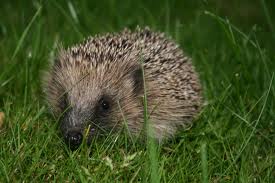 Native Hedgehog
~ diet of earthworms
Native Hedgehog
~ diet of earthworms
“They like to roam two miles each night, but there are more walls and fences to block their way.”
.

Preferred badger food …if the badgers are left alone.
.
.
Somerset badgers fall victim to poisoning campaign
.
‘SECRET World Wildlife Rescue carers are astounded by the amount of badgers admitted to the charity showing signs of poisoning in recent days.
Volunteers at the East Huntspill centre have seen several badgers taken in with neurological symptoms caused by poison. One badger died soon after arrival, another is on a drip and a third is seriously ill. A fourth was revived and carers hope to release it back into the wild.
Centre care manager and veterinary nurse Sara Cowan said:
.
“I have not seen such critical signs of poisoning in all my years as a nurse. The faeces from one badger was florescent green from the poison – it was that bad. We suspect people are putting poison in food and leaving it near badger setts.”
.
The situation has been reported to police who are investigating.’
.
.
References and Further Reading:
[1] The Badger Trust ^http://www.badger.org.uk/
[2] Save the Badger ^http://www.savethebadger.com/
[3] Protection of Badgers Act 1992, ^http://www.legislation.gov.uk/ukpga/1992/51/contents
[4] Worcestershire Badger Society ^http://www.worcestershirebadgersociety.org.uk/
[5] Badger Protection League ^ http://www.badgerprotectionleague.com/
[6] ‘NFU publishes position on badger culling‘, Farmers Guardian, 13th Dec 2010, http://www.farmersguardian.com/home/livestock/livestock-news/nfu-publishes-position-on-badger-culling/36166.article
[7] ‘Bacillus Calmette-Guérin vaccination reduces the severity and progression of tuberculosis in badgers’, The Royal Society, 10th September 2010, http://rspb.royalsocietypublishing.org/content/early/2010/11/24/rspb.2010.1953
[8] DEFRA on bTB http://www.defra.gov.uk/food-farm/animals/diseases/tb/
[9] Badger Watch and Rescue Dyfed http://www.badger-watch.co.uk/
[10] Scottish Badgers http://www.scottishbadgers.org.uk/
[11] Essex Badger Protection Group http://www.essexbadger.co.uk/
[12] Herts and Middlesex Badger Group http://www.hmbadgergroup.org.uk/
.
– end of article –
 It won’t be long before human demand for Tim Tams and other palm oil consumer products have driven the orangutan into extinction.
It won’t be long before human demand for Tim Tams and other palm oil consumer products have driven the orangutan into extinction.